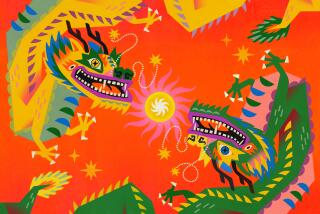Of Dragons and Babies
- Share via
Legend has it that Lord Buddha, on his death bed, summoned all the world’s animals. Only 12 appeared before him--the rat, the ox, the tiger, the hare, the dragon, the snake, the horse, the ram, the monkey, the rooster, the dog and the boar. Buddha rewarded them by placing them in the Chinese zodiac and naming a year for each one, in a 12-year cycle.
Now it is the dragon’s turn. The lunar new year that dawns next Wednesday will be the Year of the Dragon, or 4686 by Chinese calculations. A holiday that is more ancient than the Western world’s Jan. 1, the lunar new year will be celebrated by about a quarter of the world’s population. Wherever they live, Chinese, Vietnamese and many other Asians will pay off their debts, feast with their relatives and spoil the younger generation with lai see (“lucky money”) tucked into bright-red envelopes.
Yet, in mainland China, officials approach this particular new year with misgiving. The problem is that many Chinese believe that each child takes on the personality characteristics of the animal that represents the year of his birth. Dragon babies are the most prized of all, for they are thought to be brave, self-confident, healthy and energetic, destined for success and prosperity. Every time the Year of the Dragon rolls around, birthrates climb.
This year China cannot afford another jump on its population charts; it is already in the midst of a baby boom. In 1987, for the second year in a row, China posted an increase in its birthrate. Births, which had been dropping in the early 1980s, once again far exceeded the state target.
The official People’s Daily recently blamed China’s continuing population crisis on widespread defiance of the one-couple/one-child policy imposed in 1980. In the countryside, where extra children mean more hands for the harvest, 40% of the married women have borne a second child since 1985 despite fines and other penalties. And, in some places, soft-hearted local officials have eased up on the one-child rule, letting couples whose first offspring was a girl try again.
Now the People’s Daily says that those second children are jeopardizing China’s goal of limiting its population to 1.5 billion by the year 2030; the population will probably hit 2 billion, double its current size, that year.
It is unclear whether Chinese leaders will respond by cracking down again, by reverting to forced abortions of unplanned children--a tack condemned in the West. The Chinese know that, despite the economic gains achieved through the current reforms, true prosperity will always elude them--even the dragon babies--unless they bring their population under control. But, as the People’s Daily conceded, the one-child rule remains terribly unpopular with children-loving Chinese. Invoking a higher authority, the newspaper noted somewhat ambiguously that “one child per couple is not absolutely in line with the laws of nature.”
More to Read
Sign up for Essential California
The most important California stories and recommendations in your inbox every morning.
You may occasionally receive promotional content from the Los Angeles Times.










